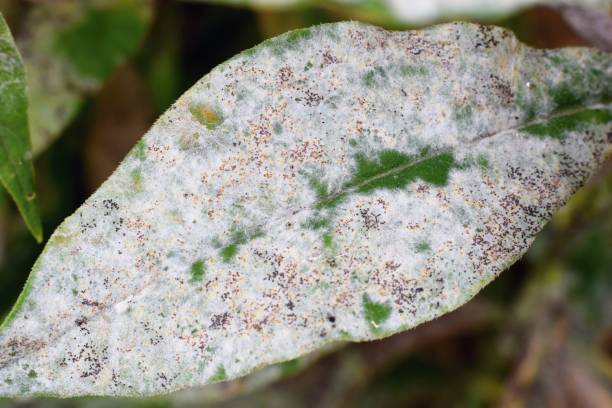Mango Plant
Mango trees, with moderate growth, flourish in well-drained soil and full sun, suitable for zones 10-11. Known for its delicious fruit, the mango tree is a staple in Indian orchards.
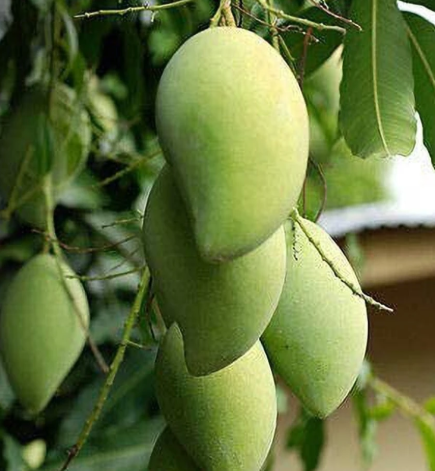
Habit
Tree
Height
6 to 10 m
Growth
Moderate
Soil
Well-drained, Sandy Loam
Shade
Full Sun
Moisture
Moderate
Edible
Yes
Medicinal
No
Origin
India
Climatic Condition
Tropical, Subtropical
Temperature (°)
25°C to 35°C
Humidity (%)
70% to 80%
Potting media
50% Loam, 40% Sand, 10% Organic Matter
Fertilizers
Organic Fertilizer
Watering
Regular watering
Plant Weight
15 to 30 kg
Flowering Time
Spring to Summer
Soil Ph level
5.5 to 6.5
Water Ph level
6.0 to 7.0
Soil EC
0.6 to 1.0 mS/cm
Yield Per Plant
150 to 300 kg per plant
NPK ratio
4:03:02
life Span
20 to 50 years
Health Benefits
High in Vitamin C, Antioxidant
Suggested Grow Media or Potting Mix ?
50% loamy soil, 30% compost, 20% sand
Suggested Fertigation/Fertilizers
Fertilize every 4 weeks with a balanced fertilizer.
Common Diseases and Remedies
Dark lesions on leaves and fruit, White powdery spots on leaves, Dark, sunken spots on fruit Distorted growth, malformed fruits Circular black spots on leaves
Prune affected parts, improve air circulation Neem oil, potassium bicarbonate Remove infected fruit, improve air circulation Remove affected parts, improve tree health Remove infected leaves, improve air circulation
Copper-based fungicides, Sulfur-based fungicides, Fungicides with captan or thiophanate-methyl.
HEALTH BENEFITS
Rich in vitamins A and C, supports digestion and boosts immunity.
What Is An Mango Tree?
Mango trees are deep-rooted, symmetrical evergreens that can reach 90 feet in height and 80 feet in width. Mango trees have simple, variable, lance-shaped leaves that are 12 to 16 inches long and are light green, purple, or copper in color when young. Mature leaves are hard, shiny and dark green.
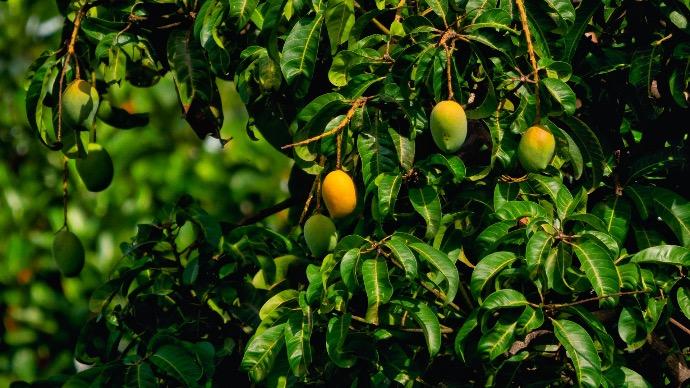
What Are The Different Types Of Mango Plants?
1. Alfonso (Hapus): -Alfonso is known as the "King of Mangoes" for its rich, sweet taste and smooth, fiber-free texture. It is grown in India.
2.Ataulfo (Honey or Champagne): - Ataulfo mangoes are small, yellow and often considered honey sweet with their creamy texture. Most of them grow in Mexico.
3. Tommy Atkins:- This variety is one of the most widely grown mangoes in the world. It has a sweet and slightly tangy taste and a fibrous texture.
4. Kent:- Kent mangoes are sweet, tangy and contain less fiber than others. They grow mostly in Mexico, Ecuador and Peru.
5. Cure:-Cure mangoes are mangoes that have a beautiful color and a sweet and tangy flavor, are popular in the United States and are often used in many types of cooking.
6. Keitt: -Keitt mangoes are green, sweet and beautiful even when ripe. They are known to exist for long periods of the year.
7. Francis:- Francis mango has a rich aroma and a sweet and rich taste. They grew up in Haiti.
8. Manila (Carabao):- Commonly found in the Philippines, Manila mango has a sweet taste and buttery texture.
9. Nam Dok Mai:- Nam Dok Mai Mango is native to Thailand and is sweet, fragrant and has a distinctive narrow and elongated shape.
These are just a few examples; There are many types of mangoes, each with its own characteristics. There are certain types that vary by region and season.
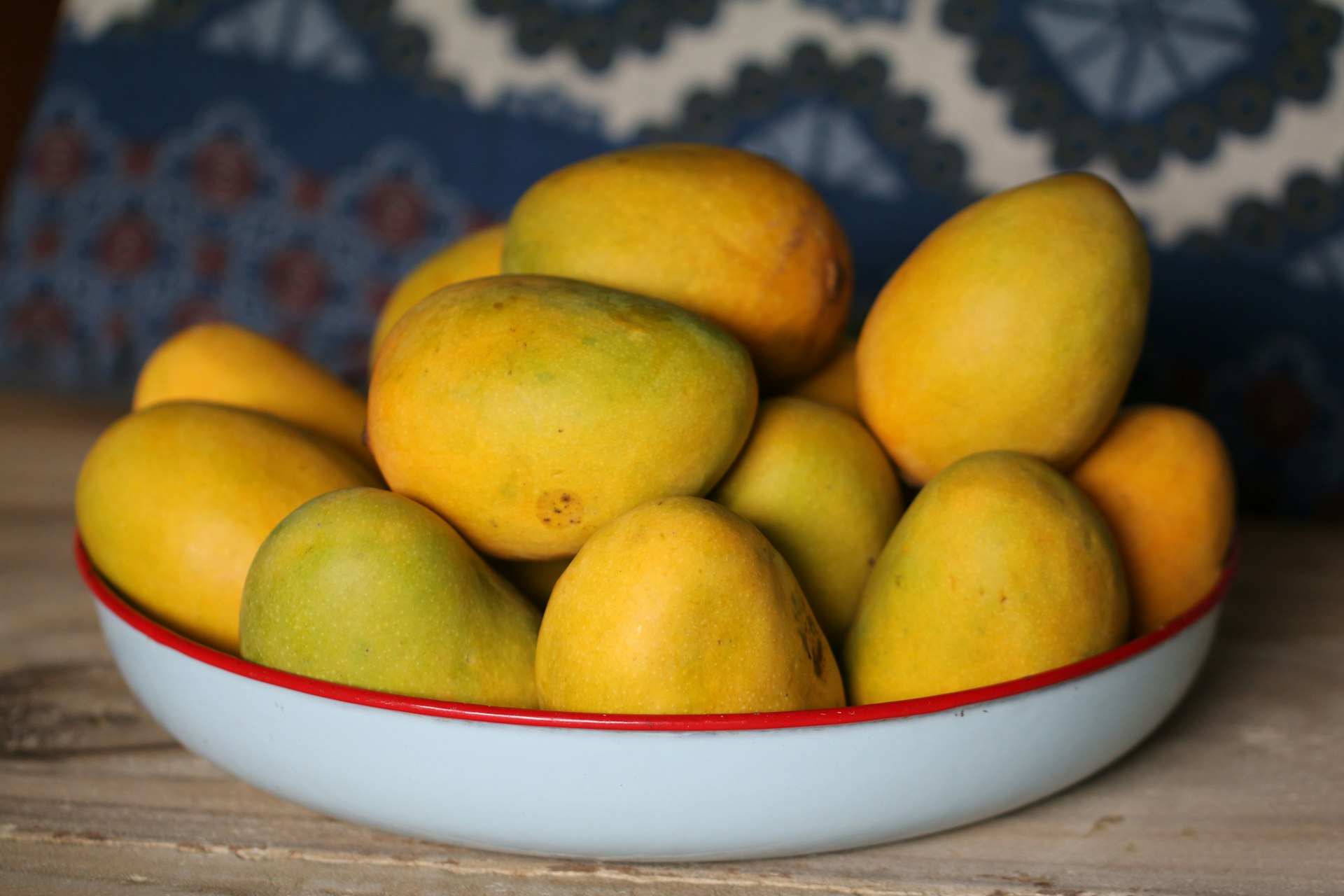
How to Care for Mango Plant ?
1. Location
Mango plants (Mangifera indica) are often grown outdoors in tropical and subtropical regions. They need cool temperatures, full sun and well-drained soil to thrive. In their habitat and climate, mango trees are usually planted directly into the ground outdoors.
2. Sunshine
Mango plants thrive in full sun. They need at least 6 to 8 hours of direct sunlight per day for good growth and fruit production. Adequate sunlight is essential for the process of photosynthesis, in which plants convert sunlight into energy for health and growth. If you plant mangoes, remember to plant them in a sunny location. In areas that don't receive enough sunlight, consider using recessed lighting to add natural light. Providing good sunlight is crucial to the health and productivity of your mangoes.
3. Soil
Use a well-drained potting mix to avoid waterlogging, mango plants cannot tolerate moisture Too much moisture at the roots. Proper mixing can help prevent problems such as root rot. Organic Matter. Add organic matter, such as well-rotted compost or old manure, to the potting mix. This increases the fertility of the soil and provides the mango plant with necessary nutrients. Mango plants prefer slightly acidic to neutral soil with a pH of 6.0 to 7.5. If necessary, you can use a pH adjusting agent. Choose a large container with enough water to accommodate the growing mangoes. Larger pots provide better, firmer roots. Apply a layer of organic mulch around the soil in the pot. Mulching helps retain moisture, control soil temperature and reduce weeds. Make sure the pot has good drainage and water your mangoes when the topsoil is dry. Fertilize your plants regularly with a balanced amount of fertilizer throughout the growing season. Remember that mangoes grown in soil need more water than those grown in soil. Proper soil contributes to the overall health and fertility of your potted mango plants.
4. Hydration
Mango plants need to be watered regularly, especially during the dry season. Keep the soil moist at all times, but avoid waterlogging. Water the plants when the top soil is dry. Create an irrigation schedule based on your climate and the specific needs of your mangoes. When the weather is hot, you need to water more frequently. Give deep water instead of frequent soaking. This encourages the development of a strong foundation. Apply a layer of organic mulch around the base of the mango plant. Mulch helps retain soil moisture, regulate temperature and reduce evaporation. If your mangoes are planted in pots, pay attention to humidity. Plants in containers dry out faster than plants in the ground. Remember that excessive watering can damage your mangoes; hence it is important to maintain balance. Adjust your irrigation system to your mango plant's specific needs, climate and soil.
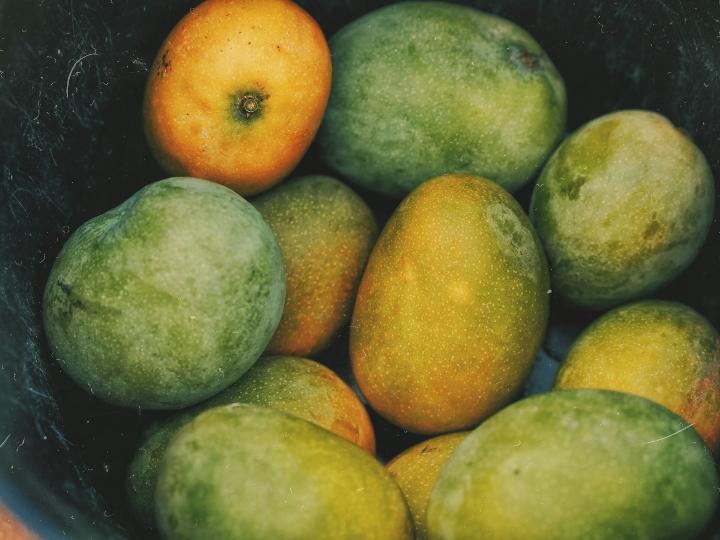
5. Nourishment
Regular fertilization is beneficial for your mango plants. Use a balanced fertilizer with a higher potassium content, such as N-P-K 6-6-4 or similar, to promote fruit growth. Fertilize throughout the growing season, usually in spring and early summer. Add well-rotted compost or old manure to the soil to increase fertility. This provides important nutrients and improves soil structure. Mango plants will benefit from micronutrients such as zinc and iron. If your soil is inadequate, consider using micronutrient-containing fertilizers or apply them yourself according to soil recommendations. Apply a layer of organic mulch around the base of the mango plant. Mulch helps retain soil moisture, reduce weeds, and slowly add nutrients to the soil as it decomposes. Make sure the mango tree gets enough water. Although it is important not to overhydrate, providing adequate moisture is also important for good nutrition. Check soil pH and adjust if necessary. Mango plants prefer slightly acidic to neutral soil with a pH range of 6.0 to 7.5.
6. Issues
1. Diseases:- Diseases such as anthracnose, powdery mildew and black fungus are found in mango plants. Check plants regularly for signs of disease and apply appropriate fungicide if necessary.
2. Pests:- Insects such as aphids, scale insects and mites can infect mango plants. Watch for pests and use insecticide or neem oil to control pests.
3. Nutrient deficiency: - Lack of essential nutrients, especially nitrogen, potassium and iron, can cause yellowing of leaves and poor growth. Repair nutrient deficiencies through fertilization.
Regular maintenance, timely intervention and proper care can help prevent and solve these problems, contributing to the overall health and production of the mango.
What are the Benefits of Mango Plant ?
1. Fruit Production: - The main benefit is the production of delicious and healthy mangoes, rich in vitamins, minerals and antioxidants.
2. Financial Value:- Growing mangoes can provide economic benefits because its fruit is a profitable business and the crop is exported to many tropical regions.
3. Shade and Aesthetic Value:- Mango trees are valuable in terms of landscaping and sunlight by providing shade with their thick leaves.
4. Carbon Sequestration:- Like other trees, mango trees also support carbon sequestration by absorbing carbon dioxide during photosynthesis.
5. Prevent Soil Erosion: -Mango tree roots help stabilize soil, prevent erosion and improve soil structure.
6. Wood and Timber:- Mango wood has many uses, including furniture and accessory making. The wood is durable and termite resistant.
7. Traditional Medicine:- In some cultures, parts of the mango are used in traditional medicine for their health benefits.
Overall, the mango tree has many environmental, economic and cultural aspects, making it a useful and versatile plant.
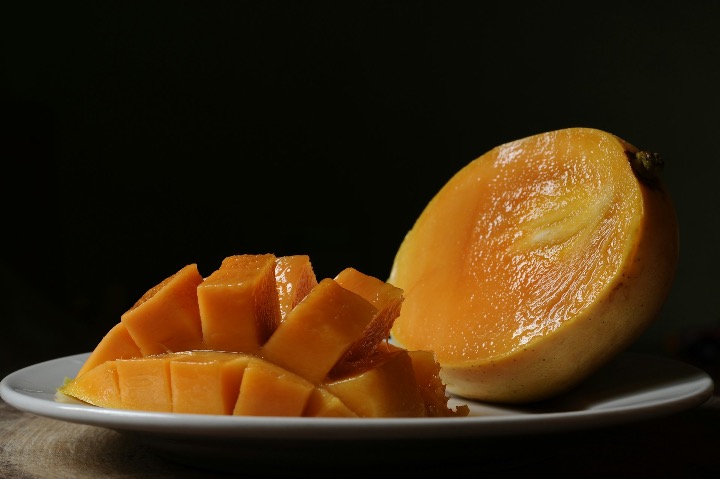
FAQs About Growing Mango
1. Sun:- Mango plants grow well in full sun. Make sure it gets at least 6-8 hours of direct sunlight per day.
2. Water:- Water is stable and constant. Keep the soil moist at all times but not waterlogged. Treat water according to plant needs and local climate.
3. Fertilization:- Feed your mango trees throughout the growing season (spring and summer). Using fertilizers high in potassium is good for fruit growth.
4. Pruning:- Pruning trees to remove dead or diseased branches and make them more weather resistant. Proper pruning helps maintain a strong structure and encourages fruit production.
5. Mulch:-Use organic mulch around the base of the mango plant to retain moisture, control soil temperature and reduce weeds.
6. Pest Control:- Monitor for pests such as aphids, scale insects and mites. Use insecticidal soap or neem oil to control pests.
7. Disease Control:-Watch out for diseases such as anthrax and powdery mildew. Use fungicides as a preventative measure throughout the growing season.
8. Supporting young trees:- Stake or support mango trees until they develop a solid foundation.
9. Warm Note:- Protect mango plants from frost, especially in cold weather. Use mulch around the roots to help protect them.
10. Harvest:- Harvest ripe mangoes by bending the tree slightly. Let the mangoes ripen further at room temperature.
Regular care, attention to water and nutrients, and prevention of diseases and pests will keep mangoes healthy and productive. Tailor care to your mango tree's specific needs and local conditions.
